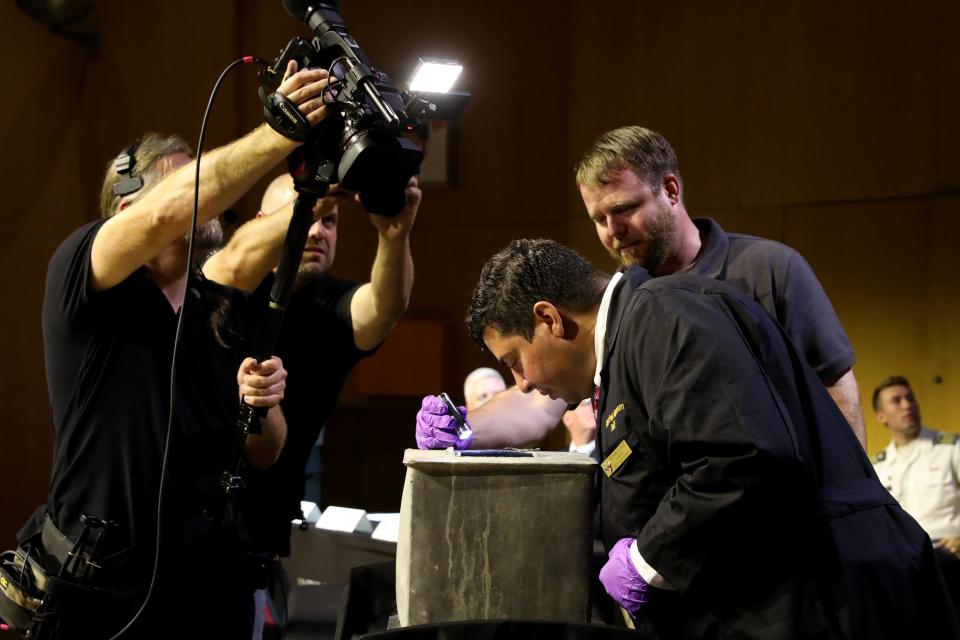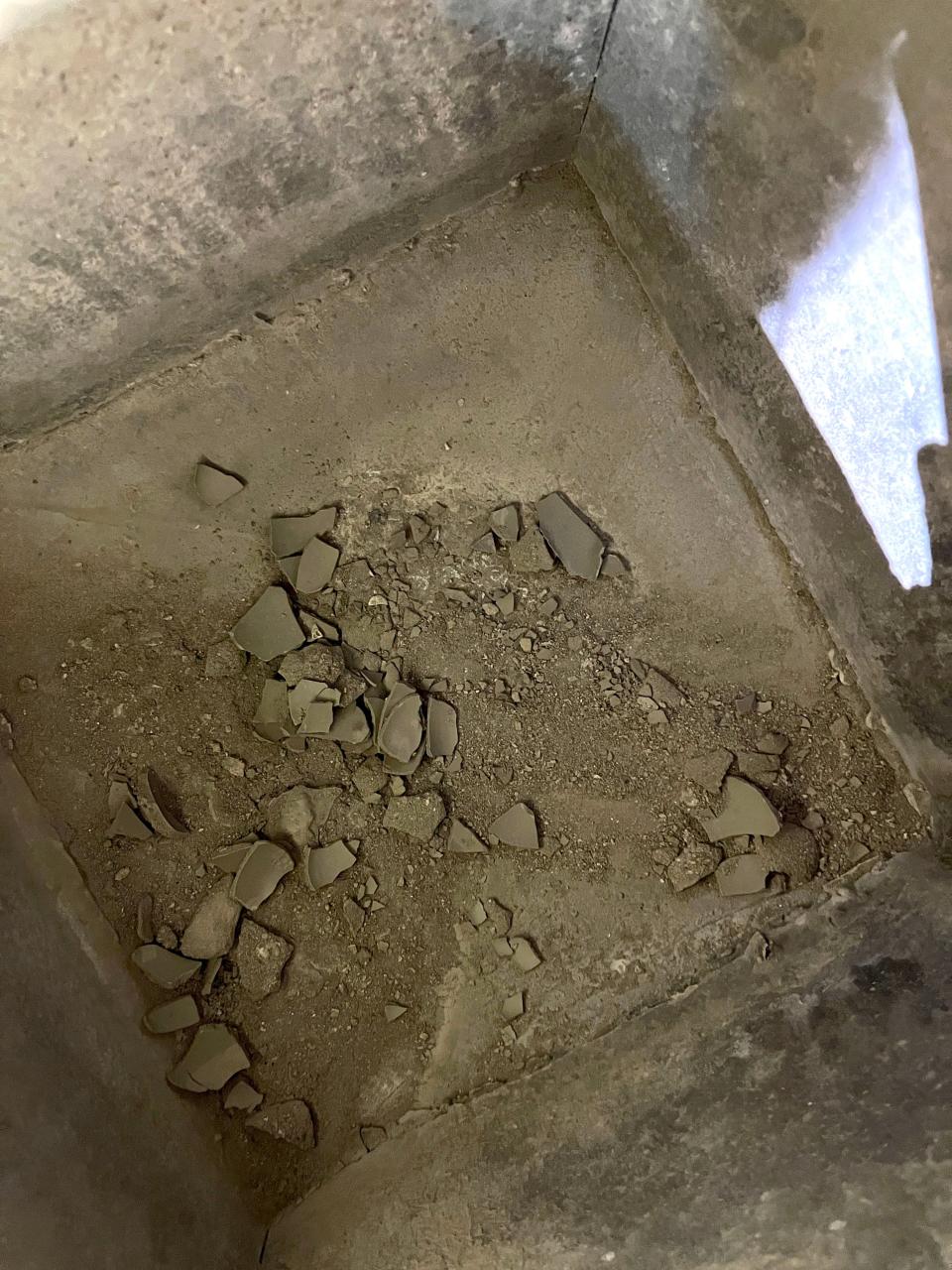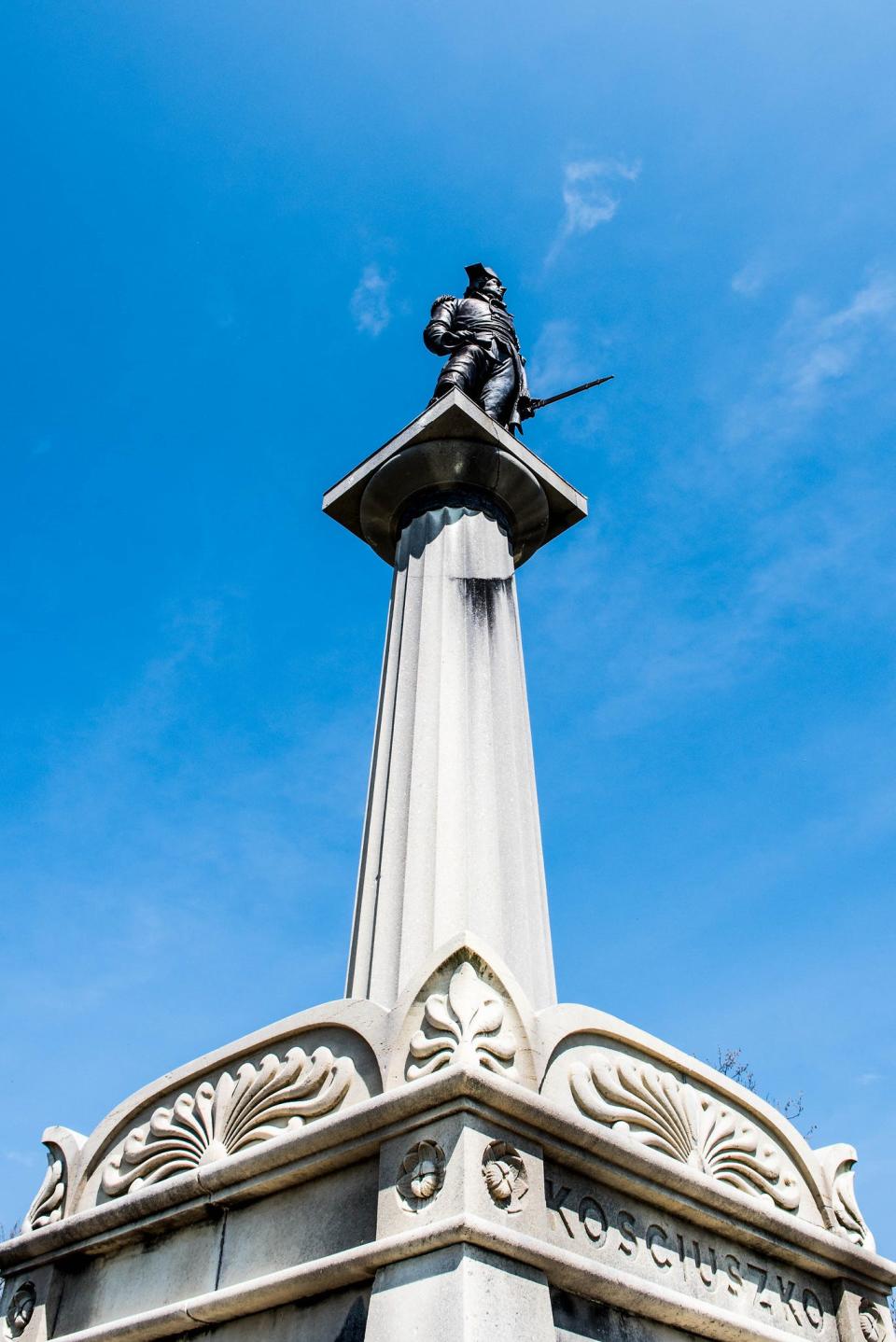What did they find in the West Point time capsule from 1829?
- Oops!Something went wrong.Please try again later.
- Oops!Something went wrong.Please try again later.
- Oops!Something went wrong.Please try again later.
It was all very compelling in the buildup, Monday’s opening of a West Point time capsule dating to when Robert E. Lee was a West Point cadet. But, in the end, while there was mention of General Washington, the event resulted in general disappointment.
A crowd arrived at the auditorium excited, hoping to see if a lead box from 1829 — found in May in the base of a monument to Revolutionary War hero Thaddeus Kosciuszko — might be a window into West Point’s storied past.
Cadets had wondered on social media what might be inside: an American flag, boots, a parade-uniform memento, a diary, maps of West Point, a custom bayonet, class rings, even mess hall silverware.
History mystery: The story behind the recently discovered West Point time capsule
‘Better than Geraldo’
“Nobody has any idea what’s inside of it,” U.S. Military Academy Superintendent Lt. Gen. Steve Gilland said at the start of Monday’s ceremony, which was also seen by more than 5,000 viewers of the livestream broadcast. “You all are here and are going to see it with all of us. I guarantee you it’s going to be better than Geraldo.”

“Geraldo” was Geraldo Rivera, who had drawn 30 million viewers to watch him “open” gangster Al Capone’s secret Chicago vault on live TV in 1986, only to “reveal” dust and debris.
Brig. Gen. Shane Reeves, dean of the academic board, also invoked Rivera before the box was unsealed.
There were three options for the morning’s reveal, Reeves said. The first option was that it could be nothing, akin to Rivera’s event.
“I was told yesterday that if we had a sense of humor we would have asked Mr. Rivera to be up here with us,” Reeves said. “I was like: ‘We should have done that.’”
Option 2, Reeves said, would be reaching a hand into the box only to find dust, “very much like Indiana Jones in ‘Raiders of the Lost Ark,’ except we don't want the Angel of Death to come out and melt our faces off, so we're going to hope for not that.’”
There was a third option, he said: “There are amazing, historic artifacts, something we didn't even know or think about.’”
They should have booked Geraldo for what turned out to be a mix of the first and second possibilities.
Unmet expectations
When Paul Hudson, the West Point archaeologist, reached his gloved hand into the unsealed lead box, he retrieved only dust and crumbling bits of dirt the color of pale ash.
“The box didn't quite meet expectations,” Hudson said. “There is a layer of silt. That's what we were removing here that settled in the bottom. The bottom had bowed out. It appears to have been from moisture penetration.”

Hudson wasn’t ready to give up on the contents of the box, which didn’t appear to have instantly recognizable historical value.
“We don't want to think that they went to all the trouble to put this box in the monument and not put anything in it,” he said. “We're going to collect all the silt at a later point. We'll screen it through a fine mesh screen to see if we can find any remains in it and determine what, if anything, was in here. Potentially, it was something small and organic that may have come apart over time, but we're just not certain.”
On the lid, he said, they could see a stamp from the manufacturer: EW Bank, New York.
“That is another clue that we might be able to track down and find some records about what was going on here with the time capsule,” he said.
'A pure son of liberty'
While those who gathered Monday walked away without an I-was-there-when moment, they left with an appreciation for history, and for Kosciuszko, a man revered by George Washington and befriended by Thomas Jefferson.

It was Jefferson, Reeves said, who called the Polish patriot “as pure a son of liberty as I have ever known.”
Sam Watson, a professor in the academy’s history department, said that while the morning didn’t unearth new history, the study of history is the study of connections. He was thinking about why the Polish general was deemed fitting for a monument.
“Kosciuszko was an international figure. He wasn't an American,” Watson said. “They didn't choose George Washington. They didn't choose Thomas Jefferson. They didn't choose one of the Adamses, someone obvious from the generation of Founding Fathers. They chose someone who could embody the connections the American Revolution had to revolution, to democracy, to the fight for freedom around the world.
“Kosciuszko had fought for freedom against the Russians occupying Poland. He really was not just an engineer, not just a military leader, not just a revolutionary. He's all of those things," Watson said. "He was really the George Washington of his country.”
The ceremony's last word was left to Charles Petigru, from the West Point Class of 1824, who had written a never-delivered speech to honor Kosciuszko at the monument's unveiling. Reading it at Monday’s ceremony was Cadet Devon Smith, a history major from the Class of 2024, who will graduate 200 years after Petigru.
“Let us learn from him that glory in great and honorable undertakings is not dependent upon success," Smith read. "That he who bravely dares for the good of his country, with a willingness to sacrifice himself to her interest, whatever may be the fate of his enterprise or his own, is always sure of his reward and of people's gratitude and the world's applause.”
Watch the opening of the time capsule here.
Reach Peter D. Kramer at pkramer@gannett.com.
This article originally appeared on Rockland/Westchester Journal News: West Point time capsule opened: What did they find inside?

